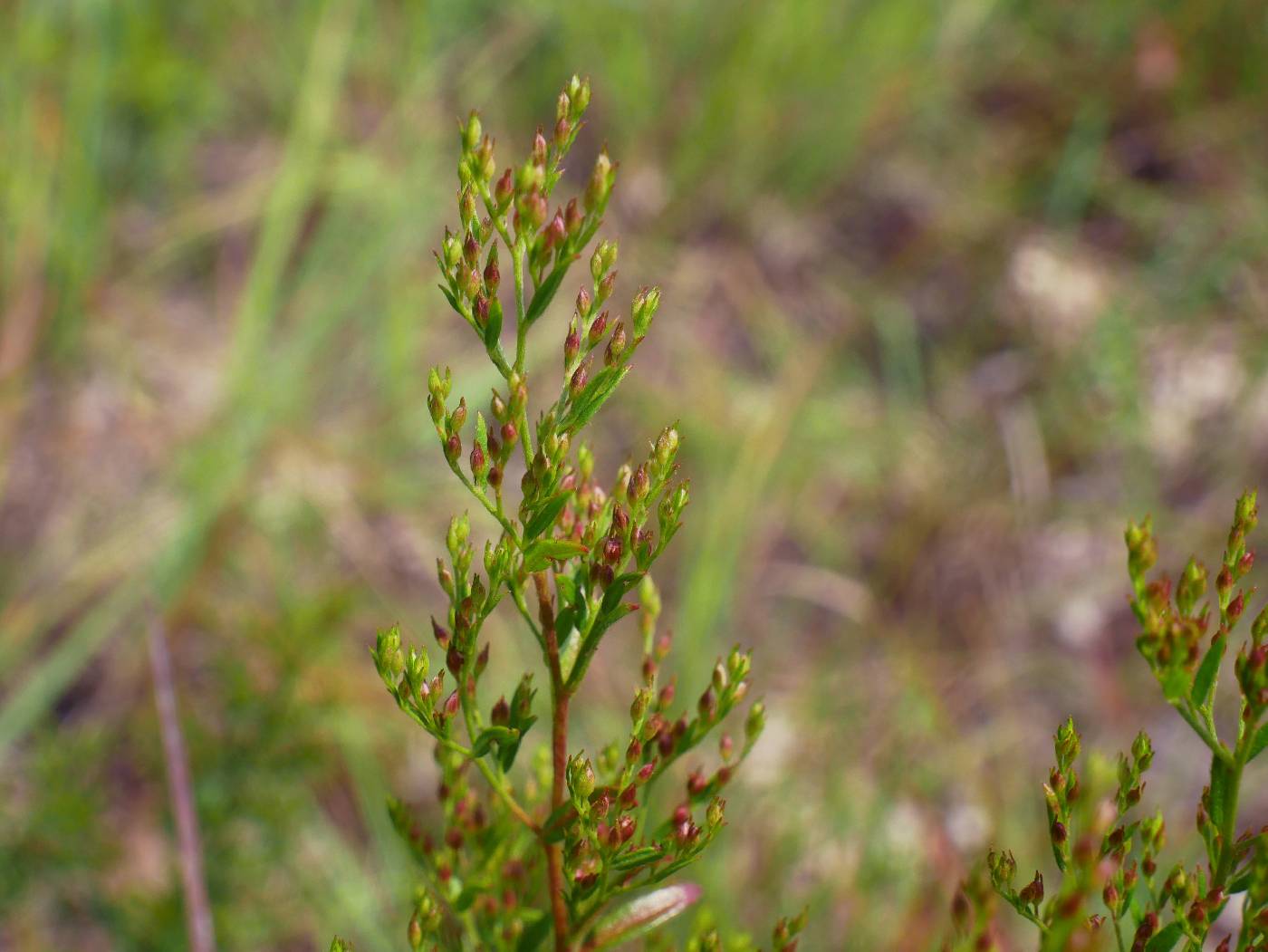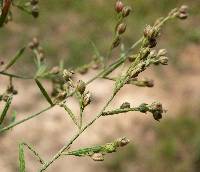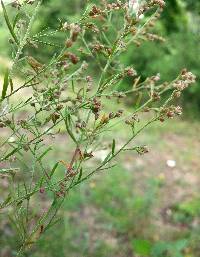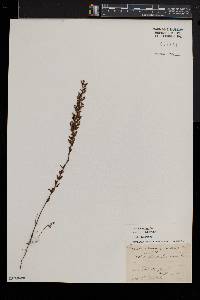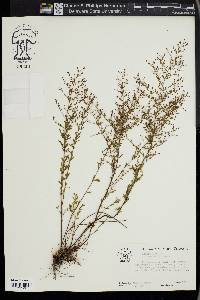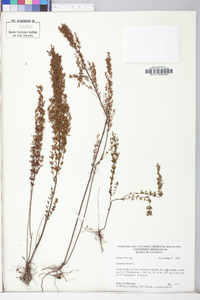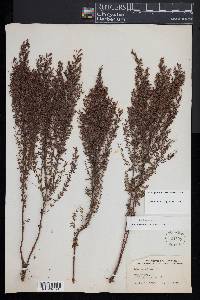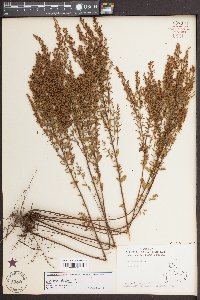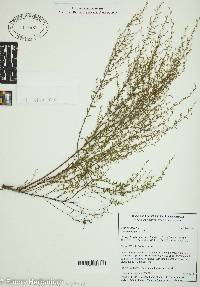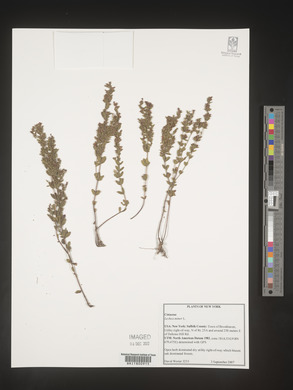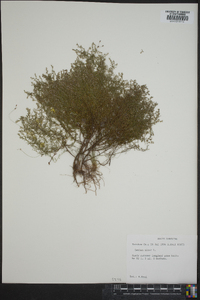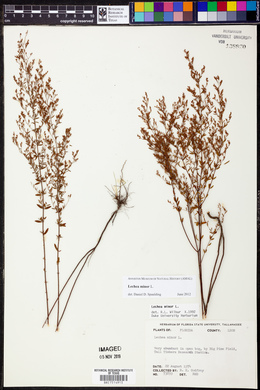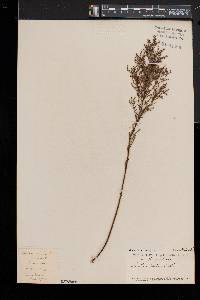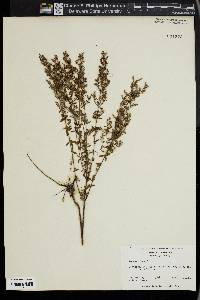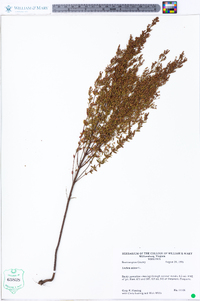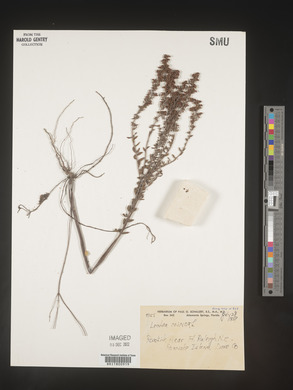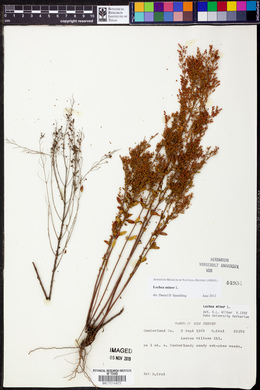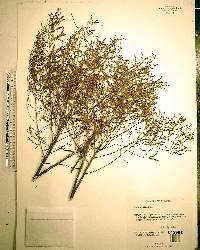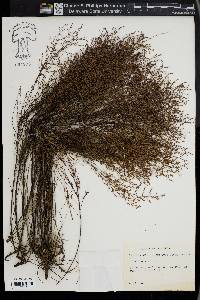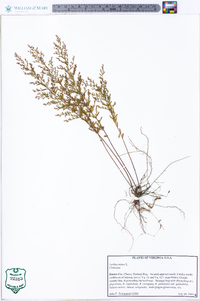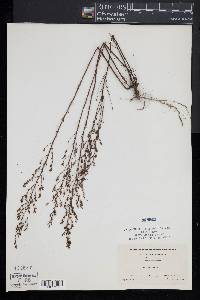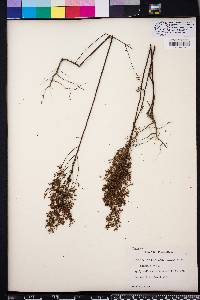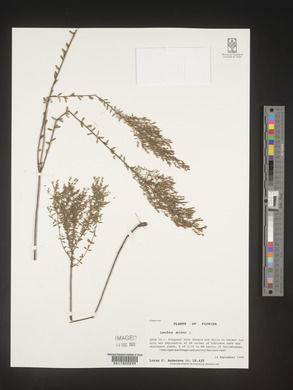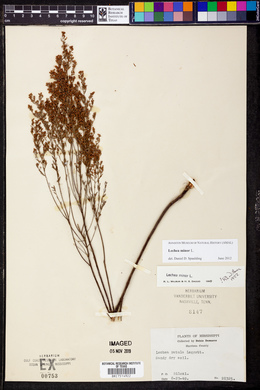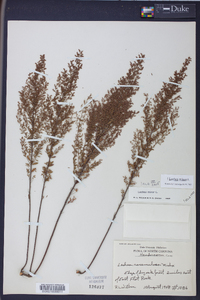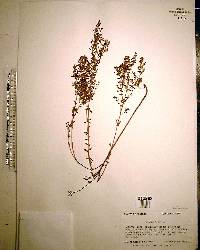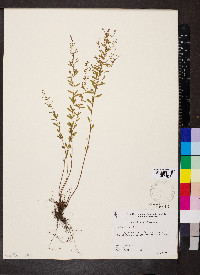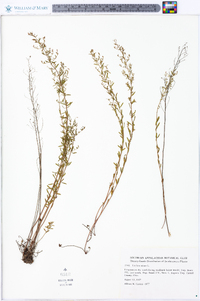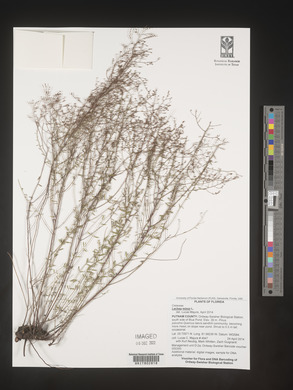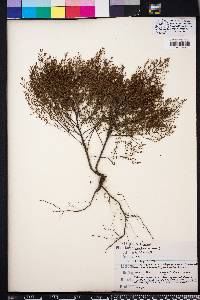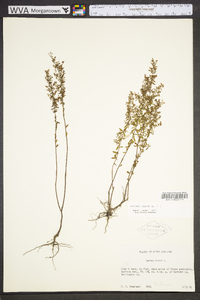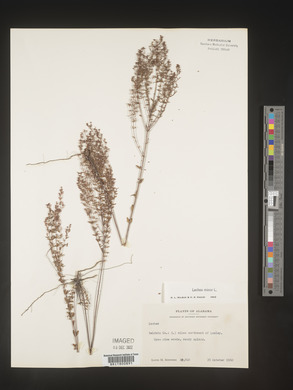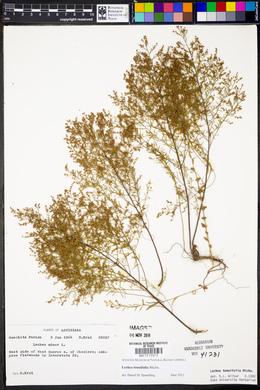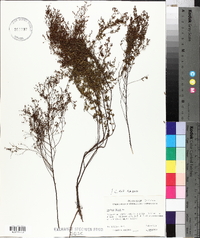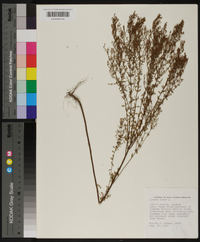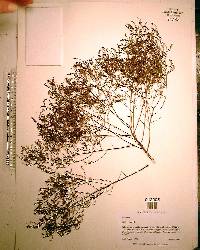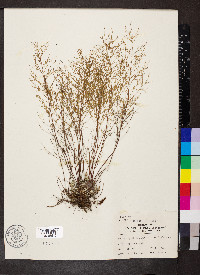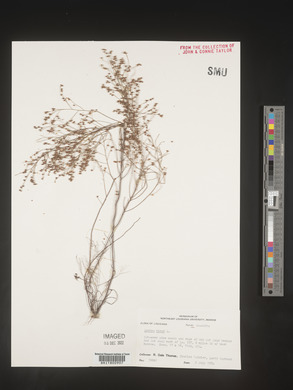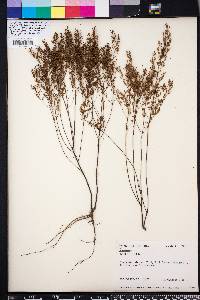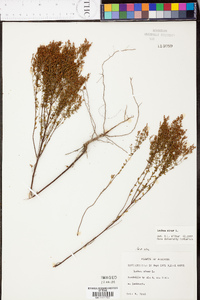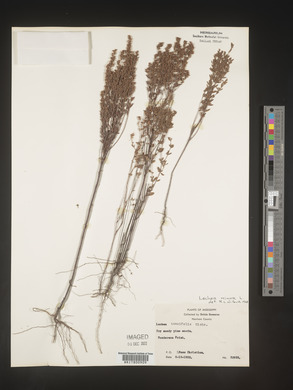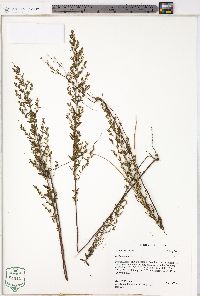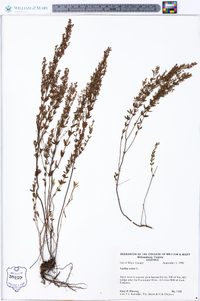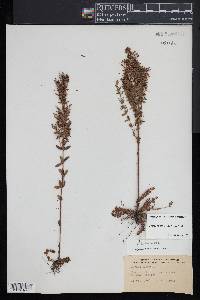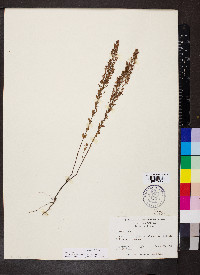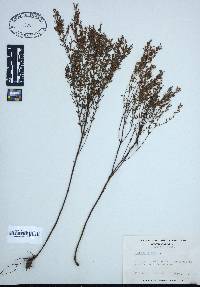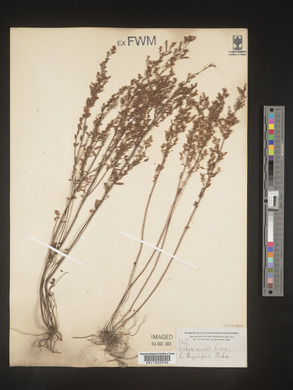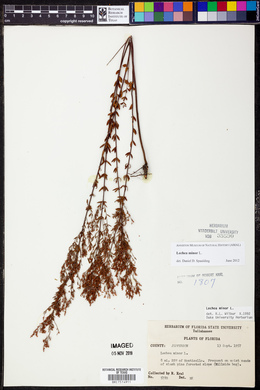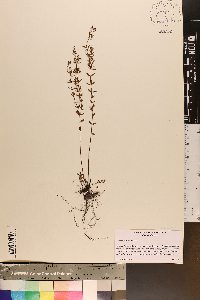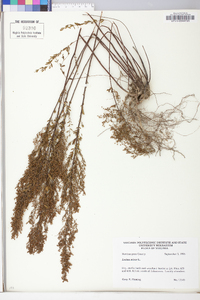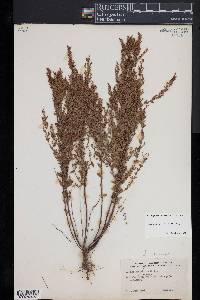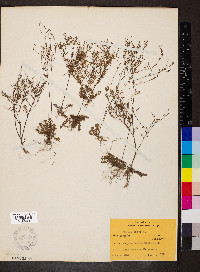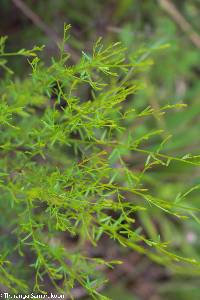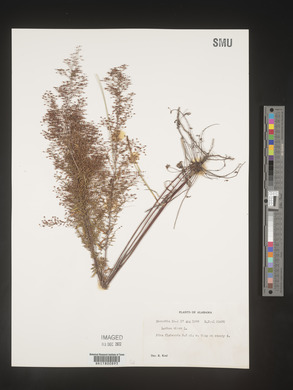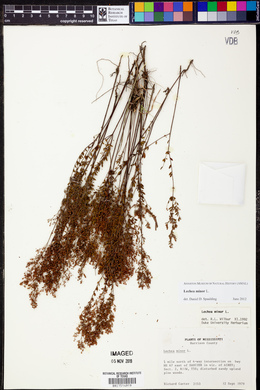Lechea minor
|
|
|
|
Family: Cistaceae
Thyme-Leaf Pinweed, more...thymeleaved pinweed
|
Perennial herb 20 - 50 cm tall Leaves: often whorled, otherwise alternate, short-stalked, bright green, small, at least 2 mm wide, five times (or less) longer than wide, lance-shaped to narrowly oblong, non-toothed, one-nerved, mostly hairless except for sparse spreading hairs on underside along midvein and edges. The leaves on the later produced basal shoots differ from the upright stem leaves by being much more crowded, often opposite or whorled, more elliptic to egg-shaped, and only 3 - 6 mm long. Inflorescence: terminal, narrow, somewhat compact, finely leafy, ascending branches ending in loose irregular clusters or short spike-like clusters of stalked, tiny (under 3 mm tall), reddish, non-showy, radially symmetric flowers. Sepals: five, but in two series, with outer two green, linear, much narrower, and quite a bit longer than the brownish, 1.6 - 2 mm tall, broadly egg-shaped inner three. All five sepals are appressed-hairy and longer than the petals, but the inner three sepals may have an obscure, slightly raised, narrow, lengthwise ridge (keel) along the narrow midrib on their outer side. Petals: three, mostly concealed by sepals, reddish, small, and rarely expanding. Stamens: typically five to twenty, with short anthers on relatively long, slender filaments. Pistil: with one, single-chambered, superior ovary; no style; but three, feather-like stigmas. Fruit: single-chambered, three-valved, ellipsoid to egg-shaped capsules which are almost enclosed by the persistent inner sepals, and sit on stalks shorter than 2 mm. The capsules are just about the same height as, or slightly taller than the sepals, so often the very top of the capsule is exposed above the sepal tips. Stems: one to several, erect, unbranched below inflorescence, thinly covered with strongly ascending to erect or inward curved hairs. Late in the season producing basal shoots up to 5 cm long, with numerous, crowded leaves. Seeds: two to three per capsule, light to dark brown, opaque, and released when top of capsule opens down the three lengthwise valves. Similar species: Lechea minor is most similar to L. tenuifolia, except that species has very narrow (up to 1.5 mm; ten or more times longer than wide) linear leaves, and the outer sepals normally are only a bit longer than the inner sepals. Also similar is L. mucronata, except that species has spreading hairs on the stem, the outer sepals are about the same length as the inner sepals, and the mostly hairless inner sepals have a greenish, rough, obviously raised, lengthwise ridge (keel) running down their outer side. Some individuals of L. racemulosa may appear similar, but normally the fruit stalks are more than 2 mm long, and the outer sepals are never longer than the inner sepals. Flowering: July to September Habitat and ecology: Occasional in sandy black oak savannas, and somewhat frequent in the dune area. Occurence in the Chicago region: native Etymology: Lechea is named after John Leche (1704 - 1764), a Swedish botanist. Minor is the Latin word for smaller, or lesser. Author: The Field Museum Stems 2-5 dm, with erect or strongly ascending hairs; lvs sparsely pilose beneath on margins and midvein, those of the basal shoots commonly opposite or whorled, elliptic-ovate, 3-6 mm, the cauline lanceolate to narrowly oblong, mostly avg not more than 5 times as long as wide, short-petiolate, often whorled; fls in loose, irregular clusters or short racemes; inner sep rounded on the back, with very narrow midrib, scarcely keeled, ±pubescent over the surface; outer sep green, similarly hairy, equaling or usually exceeding the inner; fr subglobose to ellipsoid, about equaling or slightly surpassing the cal, the top exposed. Dry soil, usually in sunny places; Mass. and Vt. to s. Ont. and n. Ind., s. to Fla. and La. Gleason, Henry A. & Cronquist, Arthur J. 1991. Manual of vascular plants of northeastern United States and adjacent Canada. lxxv + 910 pp. ©The New York Botanical Garden. All rights reserved. Used by permission. From Flora of Indiana (1940) by Charles C. Deam In very dry, sandy soil on wooded slopes or at their bases in moist, sandy soil. Rare. …… Indiana Coefficient of Conservatism: C = 8 Wetland Indicator Status: N/A |
|
|
|

